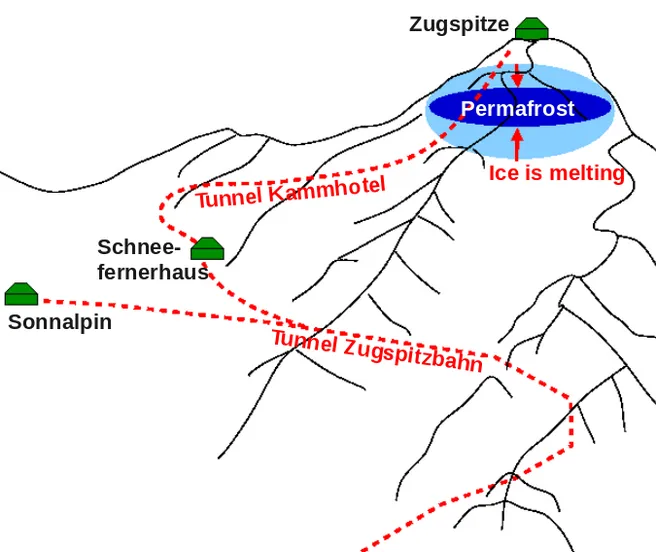Rock and soil instabilities and cascading events are frequently induced by the hydrostatic pressure changes and rainfall events. The bulk water content, the degree of saturation and the resulting hydrostatic pressure of rock and soil is a key parameter for the onset and process modeling of gravitational hazards, but it is often the least well known parameter, especially in fractured rock masses. Mass changes derived from gravity field observations are the only non – invasive tool to monitor medium to long – term changes in the water content and pressure of large mountain complexes, related to snow melting and heavy rain, forcing mainly large events such as rock slides and deep – seated gravitational movements.
First gravity measurements with a Scintrex CG - 3/3M gravity meter for the detection of gravity chances induced by hydrological mass displacements have been performed in 2013 in the Kammhotel tunnel.
A schematic overview of the measuring site and the related infrastructure is provided in the picture beneath. In two measurement campaigns before and after snow melting (May and July 2013) performed in the frame of a Bachelor’s and Master’s thesis, the gravity changes have been observed along a profile from Schneefernerhaus to the summit.
Beside a clear correlation with heavy rainfall events, significant changes in the gravity field along the profile could be identified, indicating mass displacements in the permafrost region. Based on a simplified forward modeling approach, a preliminary estimate for water run – off in the order of 2000 m³ was derived.
In the future, regular joint measurement campaigns shall be performed together with the landslides and engineering geodesy Groups of TUM, and the resulting gravity measurement shall be integrated, together with geoelectic, seismic, meteorological and other complementar data, in a physical process model of the Zugspitze area.
Link:http://www.alphaz.bgu.tum.de/fileadmin/w00brp/www/research/projects/Gravimetrie/Gravimetry.pdf



